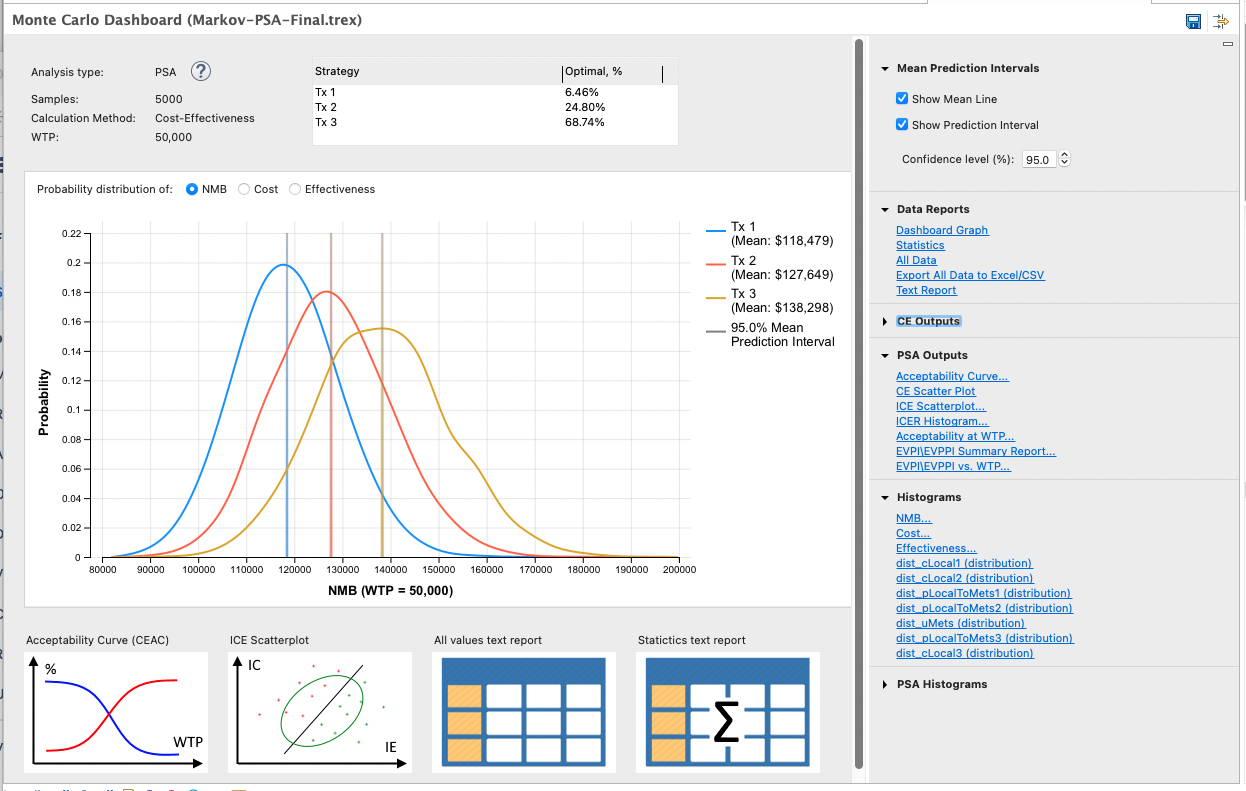32.3 Running PSA on a CE model
We will now run PSA on our fully configured cost-effectiveness example model Markov-PSA-Final.trex. This runs the model many times with each calculation using a different set of samples from our distributions.
The set of model calculations is then used to generate a series of secondary outputs that help us better understand the impact of combined parameter uncertainty on our model.
To run probabilistic sensitivity analysis:
-
Open model Markov-PSA-Final.
-
Select the Decision node.
-
Choose Analysis > Monte Carlo Simulation > Sampling (Probabilistic Sensitivity)… from the menu. The Monte Carlos Simulation Dialog will open.
-
Enter 5000 for the number of samples to run (model calculations).
-
Click Begin to start the simulation.
When the analysis finishes, you will be presented with the PSA Dashboard (the output for the dashboard split into the top and bottom sections below).

The PSA Dashboard provides a direct view into the underlying results as well as access to additional graphs and reports that help you interpret the results.
-
Analysis Information: This includes the analysis type, number of iterations (in this case samples), model calculation method and WTP.
-
Summary of Results Table: Shows the percentage of model calculations that favor each strategy based on the highest NMB.
-
Probability Distributions of CE Outputs Graphs: A probability distribution trend line for each strategy showing the mean and variance among model calculations. The graph default uses NMB, but tabs are available to switch to Cost or Effectiveness. The vertical lines and shading represent the mean values and the prediction interval around those means. Open these graphs via the link to Dashboard Graphs.
-
Quick links to commonly-used outputs: (Bottom figure) Click on the icon to open the associated graph or report.
-
Full list of data reports and graphs: To the right of the Dashboard is a full list of links to all reports. The individual reports are described in subsequent sections of this chapter.
